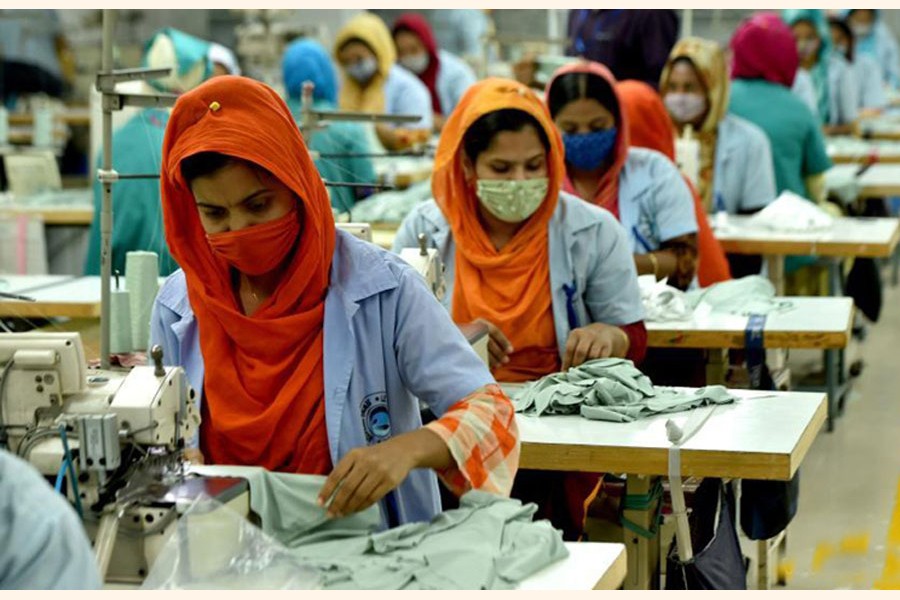On May 11 the labour and employment ministry of the Bangladesh government issued a circular excusing the garment sector from labour law provisions of 100, 102, and 105 about working hours and overtime. It stipulates that garment factory workers can work two extra hours of overtime daily; the factory owners persuaded the government with an argument that they are facing a high order volume and there is a shortage of workers. It is not unusual at all that the government gave in to the pressure from the industry owners as all governments had to swallow many bitter pills prescribed by these powerful socio-economic elites before. When a country's economy -- export earning to be specific -- becomes almost exclusively dependent on one particular sector, they can push to get their warranted or more often than not unwarranted demands met unsurprisingly even ignoring the existing labour act of the country and ignoring the health, safety, and wellbeing of the workers who have no bargaining power.
Given these new limits, garment workers will be working up to 14 hours a day translating to 72 hours a week. The poor, malnourished, physically weak workers from the lowest socioeconomic bracket of the country who have been in desperate need of earning a little more to make a bare living will certainly agree to work as many hours as they can possibly get. Given the recent price hike of all essentials in the Bangladesh market, they will become more desperate. Will they have an option to decline to overwork?
Previous research has been conclusive that working long hours have negative effects on workers' health and safety and it disrupts their work and family balance. Unfortunately, the increased inter-country competition and globalisation over the recent decades resulted in increased use of subcontracting, outsourcing, privatisation, and the use of temporary contracts and other unusual employment options in many economic sectors and these have created new and unique challenges, particularly in the low and middle-income countries (LMIC) for factory workers who often belong to the lowest socioeconomic strata and who barely make a living wage with few or no alternate employment or income opportunities with their low skills or educational attainment. These transformed options and practices lead to high work intensity and this as a consequence causes high stress and a range of other psychosocial hazards for the workers. Accidents and injuries, poor health, disease, and absenteeism at work unsurprisingly rose.
A comprehensive analysis by the World Health Organization (WHO) and the International Labour Organization (ILO) on the loss of health and life connected with working long hours (published in Environment International, 2021) showed that long working hours -- 55 or more hours a week -- led to 398,000 deaths from stroke and 347,000 from ischemic heart disease in 2016 alone. It is estimated that the number of deaths due to working long hours from heart disease rose by 42 per cent whereas from stroke it rose by 19 per cent between 2000 and 2016.
Work-related disease burden was predominant among male and middle-aged or older workers, the same report also marked. Working long hours contributes to about one-third of the total work-related burden of disease. People who had worked 55 hours or more per week between 45-74 years of age died earlier. That analysis concludes that working more than 55 hours per week compared to working 35-40 hours is associated with an estimated 35 per cent higher risk of a stroke and a 17 per cent higher risk of dying from ischemic heart disease.
Other research studies also looked at the physical and psycho-social effects of working for long hours. Findings include: (1) those working more have relationship problems, (2) working more hours is associated with more alcohol and tobacco consumption, as well as abnormal weight gain, (3) an increase in overtime yields a decrease in productivity in manufacturing industries, (4) companies with high overtime report high absence rates, (5) those working more a day have high depression risk, and (6) those who work for long hours are at higher injury risk. Many of the problems identified by research result in a high level of stress which disrupts blood pressure, immune system function, sleep, appetite, memory, and mood.
WHO and ILO recommend the following actions to protect workers' health:
(a) Governments can introduce, implement and enforce laws, regulations, and policies that prohibit mandatory overtime and ensure maximum limits on working time;
(b) Collective bargaining agreements between employers and workers can arrange a working time to be more flexible while agreeing on a maximum number of working hours;
(c) Employees share working hours to ensure that number of hours worked does not exceed 55 hours per week.
Given the strong research evidence against working abnormally long hours, the Bangladesh government may rethink and review the newly allowed overtime limits for garment workers-- most of whom are reproductive age young females. Surprisingly, the international organisations including WHO and ILO who are quite active and vocal in Bangladesh as well as other NGOs and human or workers' rights activists remained tight-lipped about this not well thought out move of the government coerced only by the garment business owners.
It has been learnt from newspaper reports that the government is mulling revision of minimum wage board for the garment workers in view of the recent inflationary fallouts. No doubt a timely thinking, this may also take into account the excessive work pressure of the workers towards making suitable adjustments.
Hasnat M Alamgir is a Professor of Public Health.
[email protected]


